“Rough business, this movie business. I’m gonna have to get back into loan sharking just to take a rest.”
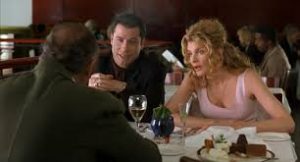
Screenplay by Scott Frank
“Rough business, this movie business. I’m gonna have to get back into loan sharking just to take a rest.”

Screenplay by Scott Frank
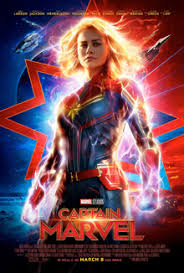
Few movies in the Marvel canon have been as anticipated as Captain Marvel, and few Marvel movies have been as divisive upon release. Marvel films are generally popcorn movies with little in the way of overt social commentary, which is usually just fine. Their sole purpose it to entertain you, and most of the time that’s all they should be expected to do. However, this was the first film in the Marvel universe with a female protagonist and it seems like everyone has an opinion on how that’s affecting the general public’s attitudes towards the film. I’m not particularly concerned about all that noise, and I’m just going to tell you my attitude towards the film.
I want to begin with the caveat that, while I generally like Marvel films, I’m not a giant fan of them. There area couple that for me have earned A-grades (The Avengers: Infinity War, Iron Man), and a couple that have earned very low grades (The Avengers: Age of Ultron, Iron Man 2). But the vast majority of Marvel films fall somewhere in the B-minus to B-plus range. They’re entertaining. They’re beautiful visually and generally have outstanding production design. They are quite often humorous. But they tend to be wide and shallow money grabs, which is what they have to be in order to appeal to the massive audiences that they attract.
In his online Master Class, Aaron Sorkin makes an interesting analogy. He mentions how the least offensive, most popular form of beef is the McDonald’s hamburger. We can debate the merits of that statement on its own, but his point was that McDonald’s sells a lot of hamburgers. They’ve cast a wide net and more people eat McDonald’s hamburgers in a day than almost anyone else combined sells in a year.
And I say that more as an observation than as a critique. It is not a good or a bad thing. It is what it is. Just like at a McDonald’s, there’s something for everyone in a Marvel film. You’re going to like it. It will fill you up. You may even leave satisfied. But it’s not going to offer you anything that’s particularly memorable or profound, and almost all of them are the same.
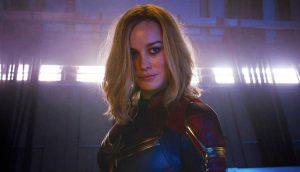
Which brings us to the latest offering from Marvel, Captain Marvel. With all of the noise I’d been hearing about this film, I was expecting to see a movie that tackled gender inequality head on. I expected to see a movie that took a serious and critical look at preconceived notions in our society of gender roles. I expected to see a film that kicked off the bounds of cinematic gender stereotypes and moved forward into a brave new world of equality. While the film scratched the surface of those issues, it did little to take a critical look at them beyond much more than a cursory glance.
Not that there’s anything wrong with that. Sometimes I love a Quarter Pounder with Cheese, and nobody does better fries. Wash it all down with an ice cold Coke and you’ve got a true American classic. And that’s what we got with Captain Marvel. We got fast paced action scenes, beautiful art direction, a cool 90’s-era soundtrack, and just enough character introspection and pathos to keep us engaged. They tried to ride the wave of the hero trying to remember her past, a-la the Bourne series, but it never reached the level of engagement where I truly cared about who Carol Danvers (Larson) was or where she came from.

This is the key element to my critique. This movie is well on it’s way to making a bazillion dollars, so obviously a giant grain of salt needs to be taken with this. Again, Marvel is selling Big Macs, not prime rib. But Marvel has also given us characters like T’Challa from Black Panther who are deep characters with internal conflict who have to decide to look back or to move forward. T’Challa was especially effective because he spends most of the story holding his late father in high esteem before discovering that his father was a flawed person who made critical errors in judgement, leaving T’Challa to have to reconcile this before he could move forward.
The problem for Carol, as she comes to realize, is that she has always fallen down. When she was little, as a girl living in a boy’s world, she couldn’t keep up. As a woman living in a man’s world, she had the same problem until (spoiler alert… I guess), she realized that each time she fell, she was able to get back up. I’m not sure what happened after she got up any of those times, because all we saw after she got up was a determined girl looking into the camera. We never saw her try again and succeed. We never saw her get a hit off the boy pitcher who knocked her down with a high and tight fastball. We never saw her win a go-cart race after she crashed. We never saw her complete the obstacle course during basic training. We never saw her overcome the discouraging words of her own father who told her she didn’t belong in the places she was trying to go.
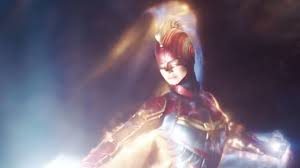
Anyone can get up after they’ve fallen. Granted, not everyone does, but there’s nothing extraordinary about it. Getting up after you’ve been pushed down is a much greater accomplishment. Getting up, even as someone who is seemingly stronger than you is holding you down, is a greater accomplishment still. That’s how you get an audience to care about your character. That’s how you get her to be universally liked and appreciated. That is where my main frustration comes from this film. I didn’t care. The climax of this film should have been filled with emotion and it wasn’t. A movie like this should have allowed us to feel something, and it didn’t, so I left less satisfied than I cold have been. It seems as though Marvel was hoping that simply the novelty of a female superhero would be enough to make us care, and judging by the box office results, it was for most people. Perhaps it was the soft sexism of low expectations, because I think this film could have and should have done better.
I said earlier that this was a typical Marvel film. What makes that statement so is that Captain Marvel, like many other Marvel films, is all flash and little substance. It wouldn’t have taken much to show Carol actually overcoming the people in her past who told her she couldn’t. Simply getting back up is not enough. We needed to see that she didn’t need superpowers to win the day. She (and girls and women everywhere) always had the power within them to overcome forces that have held them back. We’ve seen it throughout history, and we’re seeing it to this very day. Instead, Marvel stuck to their formula and gave us another Quarter Pounder with Cheese when they could (should?) have given us something a little more gourmet.
But let me say again. This is an entertaining movie, and if that’s what you’re looking for, then you should see it. If you haven’t seen it yet, however judging by the box office numbers, you probably have, then go in to it with the idea that you’re going to see a popcorn movie and not a social statement. Most of the time I’d be ok with that. Not every movie needs to do that. However, the opportunity was there for Captain Marvel to make that statement through its storytelling in a way that could have used subtext and would have been thoughtful. They could have at least given us an Umami Burger, but they stuck with what has worked for them, and it is continuing to work for them. However, eventually it is going to get stale. Hopefully they’ll get to a point where they’ll be comfortable taking more chances.
“So if I’m not black enough, and if I’m not white enough, and if I’m not man enough, then tell me, Tony, what am I?!”
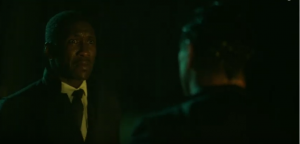
Screenplay by Nick Vallelonga,Brian Currie & Peter Farrely
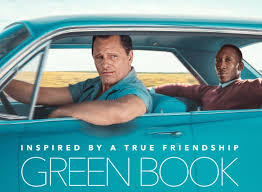
A bigoted night club bouncer is hired to be the driver of an African-American pianist on a tour of the segregated deep south of the early 1960’s.
In what would turn out to be one of the more controversial winners in years, Green Book took home the Academy’s highest honor. Based on a true story, it’s a movie that, on its surface, appears to be a story of overcoming prejudice and learning to appreciate people as individuals and treating them with empathy became embroiled in controversy over its production, the misbehavior of some of the talent involved and disagreements over the portrayal of the real-life characters.

All of the controversy will serve as a backdrop for what will ultimately be this film’s story. It is forever relegated to the long line of “controversial” winners, which is a long and storied line in Oscar history, and dates all the way back the Oscar’s earliest years (I’m looking at you, The Broadway Melody). This debate will likely rage on for some time, and for my part, I’ll add to it by saying that I liked the film very much. I watched it before hearing anything of the controversy surrounding it, and on its merits, I considered it one of the top five films of the year. The acting was terrific, the screenplay was well structured and well-written, proven out by the fact that it won the Oscar for Best Original Screenplay. I felt the direction was subtle and nuanced in a way that captured the emotion of the film without being heavy-handed.
One of the criticisms of Green Book is that it’s essentially Driving Miss Daisy redux, and that point needs to be addressed. You can see my review of Driving Miss Daisy here, but in a nutshell, I was not a fan of that film. Sure, it was a feel-good movie, and it helped catapult Morgan Freeman’s career to levels it previously hadn’t seen, but it was not the best picture of the 1989, and if we’re being honest, it wasn’t a very good film over all. There were plenty of examples throughout the film where screenwriter Alfred Uhry and Director Bruce Beresford had opportunities to inject serious drama and tension in to the story and they always, always, and without exception failed to do so. As I pointed out in that blog post, it was almost as though Uhry and Beresford loved their characters too much to put them in uncomfortable positions. However, Green Book Director Peter Farrelly and co-writers Nick Vallelonga and Brian Currie had no such inhibitions.
Here’s a perfect example of the differing dynamics between the two films. There is a sequence in Driving Miss Daisy where Hoke has to drive Daisy to some relations in Mississippi. On the way, they’re pulled over by two state troopers, and after some initial back and forth where the officers chide Hoke for driving this car and ask where he got it from, despite the fact the Daisy is clearly sitting in the back seat, it’s determined that the car is Daisy’s and Hoke is driving her and the officers let them go before lamenting the fact privately between each other that a black man is allowed to drive a Jewish woman around without repercussions. That’s all. That’s it. There’s nothing more to it. Now, there’s a similar scene in Green Book where Tony (Viggo Mortensen) and Dr. Shirley (Mahershala Ali) are driving through Alabama and get pulled over by police on a rainy night. Since Dr. Shirley is African-American, he’s not allowed to be out after dark, and that’s why they’ve been pulled over. The lead trooper instructs his partner to pull Dr. Shirley from the car and some very tense moments ensue. The scene builds to a crescendo when the lead trooper insults Tony’s Italian heritage and Tony punches the cop out, leading to both of them being arrested. If you’re a screenwriter and you’ve taken David Freeman’s excellent course, Beyond Structure, then you know that the cop was “slamming” Tony. He was verbally attacking the very weakness that Tony has, leading Tony to react in the worst way possible.
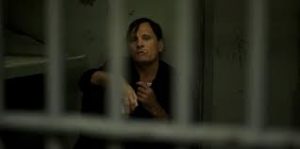
So here we have two films that have similar circumstances and put their characters in similar situations, but handled those situations in wildly divergent manners. Driving Miss Daisy simply let its characters off the hook after a few tense moments, practically telegraphing to the audience not to worry because Hoke and Daisy are going to be just fine. Neither one of them needed to do anything extraordinary. The police, realizing Hoke and Daisy weren’t doing anything wrong, simply let them go. There was nothing proactive that Hoke or Daisy did that got them out of the situation. On the other hand, in Green Book, a similar encounter with police yielded vastly different, and much more dramatic results. The police were much more aggressive in this encounter. They were almost looking for trouble and they provoked Tony into being proactive. In fact, they provoked him into the most flawed trait of his character; the one that resorts to violence to solve his problems. In so doing, they put them into an even worse situation than he and Dr. Shirley were already in. Instead of allowing Tony and Dr. Shirley to go along their merry way, the stakes were raised. The next time we see them, they’re sitting in a jail cell with no reasonable expectation of getting out until Dr. Shirley uses his guile and his brain to get them out of the situation that Tony’s muscle could not, and had in fact made worse. The latter is a much better example of good story telling because it built the drama and the tension whereas the former diffused it.
Another reason that Green Book’s approach to this situation was better is because it forces the story to build in the next scene. Now Dr. Shirley and Tony have to figure out a way to get out of jail so that Dr. Shirley can make it on time to his next and final performance of the tour. In Driving Miss Daisy, Hoke and Daisy were simply on to her relatives’ home as though nothing else had happened. In Green Book, the stakes have been raised and now there is real concern on the part of the audience that they’re going to be stuck. Here’s where Green Book showed its superior depth by having Dr. Shirley chastise Tony for only resorting to violence and implores him to never lose his dignity. This line of the story will manifest itself during the climax when Tony has an opportunity to resort to violence, but that time Dr, Shirley is able to stop him.
This leads me to one of the controversies surrounding this film and that is its take on race relations. One of the criticisms is that Dr. Shirley needed a “white savior” and by focusing on Tony as the main character, we lose the full impact that southern segregation had on Shirley.
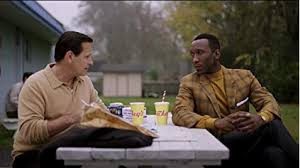
In fact, I found the opposite to be true, and I feel that point of view is short-sighted and misses some important context in this film. Certainly, there are a couple of moments throughout Act II where Tony has to come to Shirley’s rescue. Forgetting for a moment that one of the points that Shirley made when he first hired Tony to the job was that he’d need someone with Tony’s particular talents, meaning he needed his muscle in order to navigate the South, we have a symbiotic relationship between these two characters. Yes, Tony’s muscle is able to save Dr. Shirley a couple of times, a-la a knight in shining armor. But let’s not forget that the case could be made that Dr. Shirley saves Tony’s soul. Tony starts the film as a bigoted muscle head who is only marginally present for his wife and children. His simple background has stunted his intellectual and emotional growth, so he doesn’t know how to communicate with his wife and he’s reluctant to openly show her affection. After going on this journey with Dr. Shirley, and in true Hero’s Journey fashion, Tony returns to his Ordinary World a changed person with new knowledge and a broader point of view of the world. That notion has also been criticized as using Dr. Shirley as nothing more than a trope to assist Tony in his character growth. That is another short-sighted point of view because Dr. Shirley grows and changes as well. He goes through his own personal journey where Tony teaches him to be more comfortable in his own skin. Whereas Tony’s inner journey required him to accept a changing world and to be worldlier, Dr. Shirley’s was a journey of self-discovery and one where he needs to find his place in the world. He doesn’t need to shun his ethnicity, as he’s been trying to do his whole life. He doesn’t need to shun his sexuality, as he’s been doing his whole life. He just needs to be comfortable with who he is and to appreciate how he got here, and he wouldn’t have been able to do that if not for going on this journey with Tony. Dr. Shirly is not here just to motivate the change in Tony. Dr. Shirley goes through his own metamorphosis and is a different character at the end of the story than he was at the beginning. Ultimately, they end the story as equals, and equality is what we should be striving for.
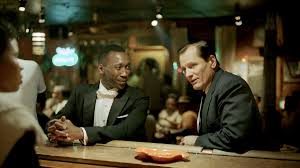
With all of the controversy surrounding the film, it’s hard to say that they did. Spike Lee was apparently so angry at the announcement that he got up and attempted to leave the theater before the acceptance speeches had been completed. Others have called into question the film’s accuracy in portraying these events, as it was based on a true story. There were other controversies surrounding the production that I’ll not get into now, but I will say this. Green Book is a wonderful film, and compared to the other films that were nominated against it, it is at least as worthy of being recognized as the best film of the year as any of them. Spike Lee’s BlackkKlansman was a very good film that was also based on a true story. It was a tense, riveting and unbelievable, yet true story about a black man who infiltrated the Ku Klux Klan. What keeps it a notch below Green Book for me is that John Stallworth, the main character, ends the film in much the same way he began it. There was little to no growth in his character and he had very few noticeable flaws. But it was an important film to be made and Spike Lee was the only director who could have made it. I understand why Black Panther was nominated, but I didn’t agree with the nomination. In fact, Black Panther wasn’t even the best Marvel movie to come out in 2018. The Avengers: Infinity War was more emotional, had better actions, more interesting characters, and was all around a better made movie. Vice tried to do too much and I believe Director Adam McKay tried to get a little too cute and tried to draw too much attention to himself, which was ultimately to the detriment of a fascinating story that included a sublime performance from Christian Bale as Vice President Dick Cheney. I was very disappointed with Roma, and found it to be underwhelming. Similarly to Driving Miss Daisy, it fell into the trap of approaching drama, but rarely paying it off. It was a year in the life of these people, and the character work was nice. It had beautiful cinematography and wonderful editing, but story-wise it was a mess. I loved The Favourite, and felt that Director Yorgos Lanthimos effectively channeled his inner Stanley Kubrick to give us a thoughtful tale with the hard lessons of being careful what you wish for. I was mildly surprised that Bohemian Rhapsody didn’t win. I’ve always been a fan of the music of Queen and I thought the film did a good job of dramatizing Freddie Mercury, who remains one of the great frontmen in the history of Rock music. A Star is Born was my personal favorite film of the year. From a pure production standpoint, it had everything that it needed. It had deep and compelling characters and it had a story that was both riveting and entertaining and ended up being emotionally satisfying, and it would have received my vote, had I had one. That said, I’m happy Green Book won. I liked it just a tick less than A Star is Born and the acting and storytelling in it made for terrific cinema.
Only if you love great acting, emotional storytelling and thoughtful narratives. Another criticism of this film is that it was clearly Oscar-bait. Well, if that means they tried to make a good movie, then they succeeded. This film is worth your time. It might not be for everyone, but it’s a rich story with characters that you can fall in love with and root for. Based on that alone, it’s worth your time.
“You see. This is where you belong. Above them all.”
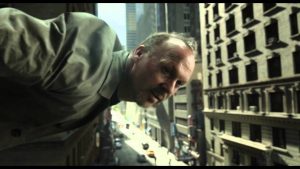
Screenplay by Alejandro Inarritu, Nicolas Giacobone, Alexander Dinelaris, & Armando Bo
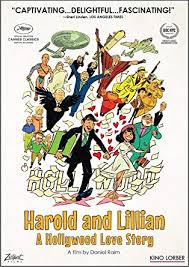
It’s not often that I critique documentaries on this blog. In fact, I’m hardly an expert on that style or type of film making, but Harold & Lillian: A Hollywood Love Story holds a special place in my heart. Lillian Michelson has been both a professional mentor to me as well as a close, personal friend, and Oscar-nominated Filmmaker Daniel Raim wrote and directed a fascinating film that alternates between a tender love story and a walk through 50 years of Hollywood history.
Full disclosure here. I met Lillian after Harold passed away, and I am honored to call her my friend and mentor. I often refer to her as my third grandmother, so I do have a personal interest in people seeing this documentary. However, that doesn’t take away from the fact that this is a superb documentary about two people who not only deserve to have their story be heard, but are also two people who earned the love and respect of some of the most powerful players in Hollywood. As the documentary points out, they were two of Hollywood’s secret weapons, but much of their work went uncredited. In this documentary, Daniel Raim attempts to provide Harold and Lillian with that long overdue credit. It’s not hyperbole to say that these two individuals, even as anonymous as they are, are two of the most influential people to ever work in the movie business. They worked behind the scenes, but as Raim shows in the documentary, their fingerprints can easily be detected covering hundreds of films.

However, if that was all that the documentary was about, it wouldn’t be all that compelling. What Raim did that made this documentary so compelling is that he added an emotional component in the narrative of the touching love story between Harold and Lillian. He showed how their budding romance that started in Miami traversed across a continent to Hollywood where it blossomed into a relationship that forged a family and inspired an art form. That emotional component makes this more than a documentary. This is an emotional experience from beginning to end, and it elicits emotional reactions throughout.
Another thing that I appreciate about this documentary, and another reason I think it works so well is that Raim weaved these two story lines together over the course of the documentary. They weren’t just two people in love who happened to work in the movie business. Their relationship inspired them to do great things. Whether it was Harold feeling the pressure to be successful because he was a new father and he needed to effectively provide for his family, or if it was Lillian fighting against the sexism of the time by becoming the most respected researcher in the business, Raim showed us who these people were as people, and not just as an artist or a researcher or a husband or a wife or a father or a mother, but as all of those things. We also saw not only how much they loved each other, but we saw how much love they received from the people that worked with them and knew them. It truly is emotionally touching to hear how Danny DeVito and Mel Brooks and Francis Ford Coppola, among many others, feel about these remarkable people.

But Raim also effectively showed the struggles that Harold and Lillian overcame, and we see that their lives were not just played out as a “Hollywood Romance”, but as a real marriage between two people whose lifetime of joy also had intermittent periods of sadness, heartbreak and other challenges. Their oldest son was born with autism, and Lillian had to figure out how to raise him in the 1940’s and 50’s when no one even knew what autism was, let alone how to treat it or deal with it in a compassionate way. We were also given insight into how the extra attention they had to give their eldest son negatively impacted their younger boys who felt like they were being neglected due to the amount of attention and care that their oldest son required.
We were given insight into a dark period of their lives after Harold broke his leg in an accident on the set of a film, and he wasn’t able to work for over a year. The depression that ensued was followed by a bout of excessive drinking, and forced both of them to make hard decisions about where their relationship was going to go. It clearly wasn’t all sunshine and rainbows for these two people, but they were able to overcome it because of the love they felt for each other, and that really makes this an inspirational story. They weren’t super heroes. They were just ordinary people who happened to be in love and that love was strong enough to persevere through a life time of challenges. That two such ordinary people could accomplish such an extraordinary thing should be as inspirational as anything can be in showing all of us that we too can have that kind of love in our lives and treat those we love with the same compassion and respect.
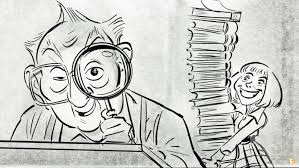
That is what makes this such an inspirational film. Harold and Lillian may have been among the best at what they did in an industry filled with some of the most talented people in the world. They were extraordinarily talented, but the most extraordinary thing about them was their humanity towards each other and to those that came in contact with them. As person who can be counted among them, I can say that my life is better for having known them.
So, if you’re interested in love stories and if you’re interested in cinema history, this is a documentary for you.
Harold and Lillian: A Hollywood Love Story is streaming on Netflix.
“…rest well and dream of large women.”
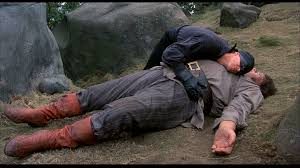
Screenplay & Book by William Goodman
RIP to you, sir.
“If a man is fool enough to get into business with a woman, she ain’t going to think much of him.”
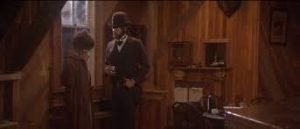
Screenplay by Robert Altman & Brian McKay
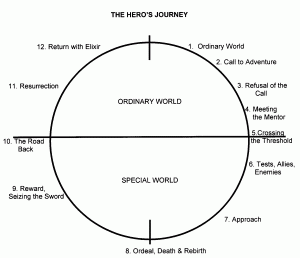
I’m going to give you some hard truths about story structure, and try to impress upon you that, while everything you’ve ever been told about story structure is not necessarily wrong, there is a different way to look at story structure that makes sense both from a macro and a micro point of view. If you read this blog with any regularity, you know that I am an advocate of solid story structure, especially for unknown writers who are trying to break in to the business.
In order to avoid controversy, I’ve stuck to the 3-Act mantra, and you can go back through all of my blogs on the subject, and I always refer to it as 3-Act structure, except for one random blog I posted a little over a year ago. Then I taught a class on story structure for Stage 32, and I decided that I needed to speak the truth. As much as we want to believe what we’ve always been told, it’s time to accept the fact that stories are more often than not told in four acts, not three.
We’ve always been taught that the proper way to write a screenplay is to write it in three acts with the first act being 25-30 pages, the second act being 50-60 pages and the third act being anther 25-30 pages. The reason for that is because of the power of 3. Everything should have a beginning, a middle and an end. That makes total sense, and while there are exceptions to that rule, it’s easy to look at almost any mainstream American film of the last 90 years and see that basic beginning, middle and end structure.
However, there is a different way to look at it. I, too, had been told about 3-act structure in my early days of learning about screenwriting. Then, one day I started taking intermediate screenwriting at USC, and the instructor opened by talking about 4-act structure. He didn’t make a big deal out of it. He just started talking about writing your screenplay in 4 acts. “He’s gotta be misspeaking,” I told myself. Everyone knows it’s 3 acts. I had friends who asked me about his class after I’d been in it for a few weeks, because everyone knew that he was pushing this 4-act idea which felt very controversial to them, again, because everyone had always been told, “3 acts, 3 acts, 3 acts.”
Being an open-minded, non-confrontational, go-with-the-flow kind of guy, I thought to myself, let’s split the difference. It can still be 3 acts, but I’ve seen plenty of graphs and charts that show Act IIA and Act IIB, so it’s really no big deal. Then I graduated from USC and I got a job at Disney working on the feature, Atlantis: The Lost Empire. Now, Atlantis will never be mistaken for the greatest Disney feature ever, but it did show me that yes, movies can be told in 4 distinct acts, because Atlantis, whether directors Kirk Wise and Gary Trousdale or screenwriter Tab Murphy, or anyone from the story team intended it, Atlantis is told in four acts. The Set Up. The Conflict / Adventure. The Consequences / Adventure. And the Resolution / Climax.
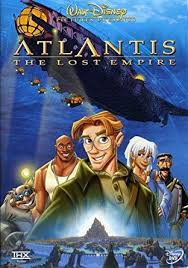
Milo Thatch is the Hero of the story and his outer goal is to find Atlantis. Well, he and his friends find Atlantis half way through the picture. In Act I, Milo is trying to convince the members of the board of the Smithsonian to fund an expedition to find Atlantis and is laughed out of the building. He then finds an eccentric billionaire who was friends with his grandfather and knows about the Shepherd’s Journal, which has clues that Milo is able to put together to determine Atlantis’ final resting place, and this billionaire has already put the team together. They just need Milo’s expertise. So at the end of Act I, the story changes direction as the adventure begins when they all board the submarine to find Atlantis. Then, at the midpoint of the film, they find it. The story changes direction again at the end of Act IIA (really Act II) as Milo now wants to learn as much about Atlantis as he can. That’s the definition of changing the Act. The story changes direction. Then Milo discovers that Rourke, the leader of the expedition has a much darker purpose for wanting to find Atlantis, the story changes direction again at the end of Act IIB (really Act III), as Milo now wants to save Atlantis, and we move into the Resolution / Climax of the story, which is Act III (really Act IV).
That got me to thinking about movies that I had seen and scripts that I had read, and the more I thought about it, the more I realized that most screenplays really are told in four acts. I am a disciple of Christopher Vogler, and I have studied the Hero’s Journey extensively. In fact, when I read scripts for coverage, I often use the Hero’s Journey as a means of evaluating, and as a means of offering up suggestions for improvement. Looking at this Hero’s Journey graph at the top, if you were to extend the vertical lines, we would see that the structure of the story is actually broken up into quadrants. Quad obviously being four. The first act starts in the Ordinary World. It sets up the problem that the hero will have to face, and usually introduces us to most of the important characters. We also learn what problem or problems the hero will need to overcome. The second act is where the adventure begins, and the hero is facing that problem. The midpoint of the story, referred to in the Hero’s Journey as the Ordeal, is often where the original problem is either solved or some other problem arises. Another common refrain for the portion of the story is that this is where the stakes are raised. In Atlantis, the stakes are raised when they discover Atlantis. It isn’t the end of the adventure; it’ the beginning of a new one. As we’ll see shortly, in Raiders of the Lost Ark, they discover the Ark half way through the movie. If the movie was just about finding the Ark, it should have ended at that point, but now the stakes are being raised, because they have to keep it away from the Nazis. That is when we move in to Act III, where we have to deal with the consequences of those stakes being raised. This generally leads to the moment where the hero loses everything, or has some comparable low point, and we transition from Act III in to Act IV. Act IV is where we have our resolution and climax.

Raiders of the Lost Ark is clearly a film that is told in four acts. Act I, Indy learns about the Ark, and that the Nazis are searching for it. In Act II, Indy searches for the Ark, and discovers it at the half-way point of the film. Act III is all about Indy attempting to get the Ark safely into the hands of the Allies and out of the hands of the Nazis, however the act ends with the Nazis getting the Ark from him, but also kidnapping Marion. Act IV shows Indy as a changed man, who was previously willing to sacrifice Marion for the Ark, but now would prefer to rescue her over getting the Ark back from the Nazis. However, overcoming that character flaw allows him to do both, and the movie ends with him losing the Ark to the Washington, D.C. bureaucracy, but gaining Marion back into his life.
Another great example is Casablanca. A four-act feature in which each act shows a different aspect of Rick’s personality. Not only that, but Act’s I and II are transposed via one of the great flash backs in the history of cinema.
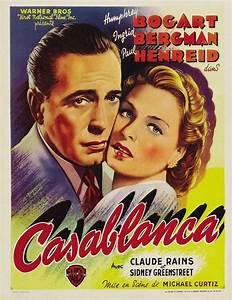
Casablanca actually starts in Act II. We have already entered into the Special World of Casablanca, and we start out the film being introduced to all of the wild and fantastical characters that live there. The Tests, Allies and Enemies portion of the Hero’s Journey starts the movie. We meet Ugarte, Renault, Major Strasser, Ferrari, but most important of all, we meet Rick, who famously will stick his neck out for no one. We learn that he used to be a warrior for justice and underdogs, but those days are past. He’s now a cynical loner, apparently bereft of feelings or emotion.
Ilsa’s arrival marks the Approach. Rick is now inevitably heading to a confrontation with Ilsa, and that confrontation will be the Ordeal, but we don’t yet know why there is tension between them or where it came from.
The Supreme Ordeal is wrapped around the flashback that takes us to Act I, Rick’s Ordinary World, which was Paris. We see his loving nature and good humor. He loves Ilsa, and he loves Paris. He seems to be a lover of life. However, all of that changes when the Nazis march into Paris and Rick thinks that Ilsa will leave on the last train out with him. However, all that he gets is a note from her, telling him that she can never see him again. With that note, the young, loving and idealistic Rick dies and is replaced by the cynical, hard-boiled Rick who only looks out for himself.
Part 2 of the Supreme Ordeal shows Ilsa giving Rick a second call to adventure by asking for the letters of transit that he’d gotten from Ugarte. Rick provides a second refusal. Now we’re in Act III as Rick starts to grow as a character. He still loves Ilsa, but his bitterness doesn’t allow him to forgive her just yet.
Act IV shows Rick back as the selfless person he once was. He chooses the path that’s best for others rather than himself, but is finally comfortable in his own skin.
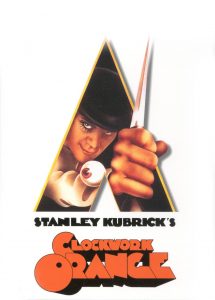
One final example of 4-Act structure is A Clockwork Orange. That movie clearly is told in three acts with Alex’s Ordinary World being the one in which he spends his nights doing the old ultra-violence with his droogs. Act II begins when Alex is arrested for murder, and he’s sent to the Special World of Prison. Act III begins when Alex is selected to receive the Ludivico treatment to make him good. Act IV shows Alex, a new man entirely, returning home only to find that he’s not wanted by his family and friends, and the people that he wronged in the past are lusting for revenge. This leads to a powerful climax and poses moral questions that can only be answered individually by anyone who watches the film.
On a macro level, thinking of your story from this point of view should make it easier to write an entire script. Rather than thinking of Act 2 as a 60 page monster, you really should be thinking of it as two sections of the story, with each one having to change the direction of the story. Instead of 2 equal acts bookending a larger act in the middle, the story should be thought of as being broken down into 4 equal sections.
Not only should the overall story be broken down like that, but so should your scenes. Each scene or sequence is its own story with someone trying to accomplish something, and some person or thing or force of nature is trying to stop that from happening.
And if you were to analyze most films, you’ll find that they match this story structure. Are there exceptions? Of course, there are. However, the vast majority of scripts are written in four acts, and the most compelling and most interesting stories are told with that structure.
“Excuse me while I whip this out!”

Screenplay by Mel Brooks, Norman Steinberg, Andrew Bergman, Richard Prior, & Alan Uger